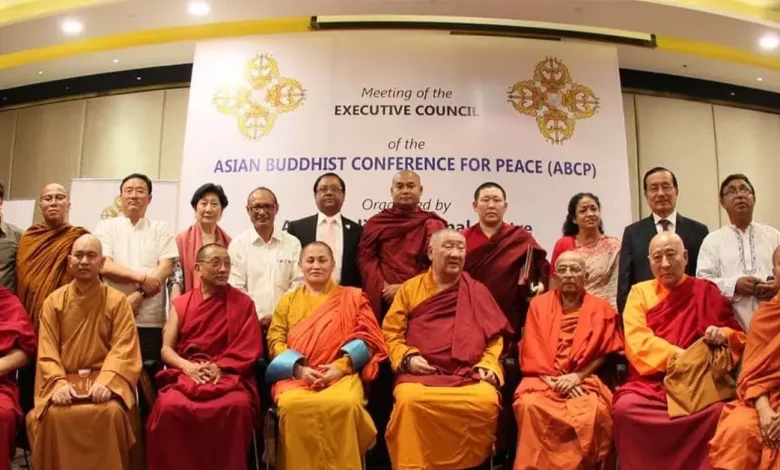Daily Current Affairs for UPSC
Asian Buddhist Conference for Peace (ABCP)
Syllabus: Indian Heritage sites[GS Paper-1], Ethics[GS Paper-4]

Context: The 12th General Assembly of the Asian Buddhist Conference for Peace (ABCP), a gathering of Asian Buddhists who come together voluntarily, took place in New Delhi.
Key Findings:
- The Asian Buddhist Conference for Peace (ABCP) is focused on promoting the Buddhist perspective from the Global South, which aligns with India’s leadership in the G20 and the Voice of Global South Summit.
- The Indian Constitution recognizes the influence of Lord Buddha, particularly in the section on the Union government.
- India demonstrates its commitment to Buddha’s teachings through initiatives like developing the Buddhist circuit and establishing the India International Centre for Buddhist Culture.
Asian Buddhist Conference for Peace(ABCP):
About:
- ABCP, a voluntary Buddhist movement, was established in 1970 in Ulaanbaatar, Mongolia.
- It was composed of both monks and lay members and was formed by Buddhist leaders from various countries, including India, Mongolia, Japan, Malaysia, Nepal, the Soviet Union, Vietnam, Sri Lanka, South Korea, and North Korea.
Purpose:
- The conference’s main objective is to explore and discuss how Buddhism can contribute to global peace.
- Representatives from various Asian countries have engaged in detailed discussions, sharing their perspectives and experiences on applying Buddhist principles to modern challenges and conflicts.
- The conference aims to promote harmony and cooperation, encouraging a collective sense of responsibility for the well-being of the world.
- Additionally, the conference serves as a platform for cultural exchange, showcasing traditional Buddhist ceremonies, art, and music from different regions.
- These interactions celebrate the diversity of Asian Buddhist heritage while reinforcing the shared ideals of Buddha’s teachings.
Using the principles of Buddhism to guide governance:
- When we look closely at the values of effective governance such as transparency, fairness in decision making and evidence based approach we notice that it matches with what Buddha talked about in regard to being part of Right View wherein maintaining Right View keeps leaders on track.
- The country utilises national happiness as a guiding principle for public well-being and balanced development that can be represented through the Buddhist concepts of Bhutan’s Gross National Happiness index.
- All leaders are supposed to remember the requirements of every person in the country and thinking of themselves as people reduce them into extreme poverty.
- The Buddha’s Five Precepts, which are not committing violence, observe theft or dishonesty and sexual misconduct or intoxication among others meet the prerequisites of public servants.
- Right Speech and Right Action presented in the Buddha’s teachings encourage civil discussions during conflicts and finding peace amid war or intense clash.
How can the teachings of Buddha be beneficial in today’s world?
- The way of life in the world today is rapidly changing, and Buddha provides some interesting teachings that offer comfort on such a constantly evolving landscape.
- He gets to know the nature of suffering, impermanence as well as how we are able to attain enlightenment comes in handy while facing life situations.
- As humans, one of the drivers that enables us to see through uncertainty and adjust is called impermanence.
- Buddha’s compassion can heal the diverse world full of conflicts, bringing respect and love back within an ethical framework.
- Mindfulness tuition provides a safe haven of sorts from the onslaught of technology, as students are taught to achieve clarity and balance in their minds.
- The other example of Buddha’s teachings that we should reconsider is what it takes to be detached from materialistic things and accept our short-term happiness as well as criticism.
Source: PIB





.png)



